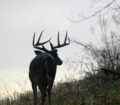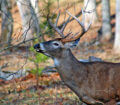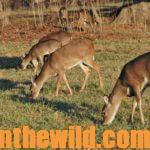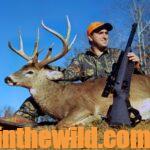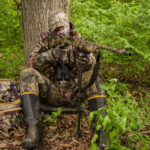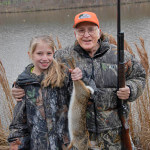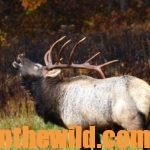Editor’s Note: Ernie Calandrelli of Youngstown, New York, has been hunting deer with a bow for almost five decades and is the Public Relations Director for Quaker Boy Calls www.quakerboy.com. He’s hunted 37 states. Today Calandrelli travels to hunt deer in Kansas, Georgia, New York, Missouri and Illinois. Most bowhunters choose one to five hunting sites, learn all they can about those areas and the deer that live there and hunt those same places for years. Calandrelli hunts many different states with his bow and thinks you should too. You’ll need to start planning now to get permits and travel reservations, identify the best regions for the opportunity to take big deer and order and study the many maps available, including Google Earth www.google.com/earth, Huntstand http://huntstand.com and OnX www.onxmaps.com maps. With your cell phone’s GPS, you can get to the sites where you want to hunt with Huntstand and OnX, even in regions with no cell service. Also MyTopo.com (www.mytopo.com) produces custom topographical maps, revealing where the high and low ground and water sources are. The aerial views can show you how much of the area’s forested, nearby water sources and any development not visible from roads.
 Another question I’m often asked is, “What state consistently has produced the most big bucks for you?” All the states I’ve mentioned have the potential to produce really-big bucks in any year. However, I’ve been most-consistently successful in the State of Kansas. The place I hunt has plenty of agricultural fields, including hundreds of cornfields, soybean fields and milo fields. This area doesn’t have a lot of woods. So, I look for river bottoms with thick cover, a shelter belt, CRP land, small woodlots or grown-up fence lines where you usually can find rubs and scrapes. Determining what the bucks are doing, and when they’re doing it makes patterning mature bucks much easier and quicker than when you’re hunting large woodlots. Often there will be a good number of bucks in these little places, because there is nowhere else for them to hide. I’m hunting small sites, and I’ve found that bowhunting is much easier and often more successful when a big buck only has 20 to 30 yards to your left or to your right where he can walk without being in an agricultural field.
Another question I’m often asked is, “What state consistently has produced the most big bucks for you?” All the states I’ve mentioned have the potential to produce really-big bucks in any year. However, I’ve been most-consistently successful in the State of Kansas. The place I hunt has plenty of agricultural fields, including hundreds of cornfields, soybean fields and milo fields. This area doesn’t have a lot of woods. So, I look for river bottoms with thick cover, a shelter belt, CRP land, small woodlots or grown-up fence lines where you usually can find rubs and scrapes. Determining what the bucks are doing, and when they’re doing it makes patterning mature bucks much easier and quicker than when you’re hunting large woodlots. Often there will be a good number of bucks in these little places, because there is nowhere else for them to hide. I’m hunting small sites, and I’ve found that bowhunting is much easier and often more successful when a big buck only has 20 to 30 yards to your left or to your right where he can walk without being in an agricultural field.
The biggest buck I’ve ever taken in Kansas scored 177 inches. The first morning I hunted the spot where I took the 177-inch buck was where I’d missed a buck that would’ve scored 160 on Pope and Young the previous year. That was the first year I’d hunted in Kansas, and I didn’t harvest a buck that first year. But the numbers and the sizes of older-age-class bucks that I saw on that hunt totally convinced me to add Kansas to my hunt schedule. So, the next year I knew where to start looking for a trophy-class buck.
 Once I arrived in Kansas that next year, I went right back to the same spot where I’d missed the big 160-inch buck. I got in my climbing tree stand and let the woods settle for about 20 minutes. Then, I blew my Quaker Boy grunt call. As soon as I blew that grunt call, this big buck came running straight in to my tree stand. When he winded me, he was between 7 to 8 yards from the base of my tree. A big tree with a very big rub was out in front of my stand, and I had ranged that tree at 17 yards. So, as soon as the buck smelled me, I drew my bow. Once the buck got to the tree with the big rub on it, he stopped and looked back, and I released the arrow. When the buck took the arrow, he took off and ran about 200 yards from my tree. Then, he jumped in a river. When he came out of the water on the other side of the river, I saw that the water behind him was red. He only went a few steps before he stopped and fell over.
Once I arrived in Kansas that next year, I went right back to the same spot where I’d missed the big 160-inch buck. I got in my climbing tree stand and let the woods settle for about 20 minutes. Then, I blew my Quaker Boy grunt call. As soon as I blew that grunt call, this big buck came running straight in to my tree stand. When he winded me, he was between 7 to 8 yards from the base of my tree. A big tree with a very big rub was out in front of my stand, and I had ranged that tree at 17 yards. So, as soon as the buck smelled me, I drew my bow. Once the buck got to the tree with the big rub on it, he stopped and looked back, and I released the arrow. When the buck took the arrow, he took off and ran about 200 yards from my tree. Then, he jumped in a river. When he came out of the water on the other side of the river, I saw that the water behind him was red. He only went a few steps before he stopped and fell over.
I wasn’t able to recover that deer for 5 hours after I shot him, because he was on another landowner’s property. I got with a buddy of mine who lives in that area, and he helped me get permission from the landowner to retrieve my buck. During that time, I was very nervous and anxious. I was worried that someone else would find my buck before I could get to him, and he wouldn’t be where I’d seen him go down. But seeing all those mature bucks the first time I hunted Kansas and then taking a 177-class buck the second time I released an arrow in Kansas confirmed my belief in the state. That’s why I go there to bowhunt deer every year.
 To learn more about hunting deer with John E. Phillips’ Amazon Kindle eBooks, print books and Audible books and Nook books, click here at https://johninthewild.com/books/#deer. You can type in the name of the book and download it to your Kindle, and/or download a Kindle app for your iPad, SmartPhone or computer. For a free download on how to make jerky from venison to provide a protein-rich snack, choose “How to Prepare Venison Jerky: The Ultimate Snack Food” at https://www.emailmeform.com/builder/form/Ece3UZVcOo52cKPJcL.
To learn more about hunting deer with John E. Phillips’ Amazon Kindle eBooks, print books and Audible books and Nook books, click here at https://johninthewild.com/books/#deer. You can type in the name of the book and download it to your Kindle, and/or download a Kindle app for your iPad, SmartPhone or computer. For a free download on how to make jerky from venison to provide a protein-rich snack, choose “How to Prepare Venison Jerky: The Ultimate Snack Food” at https://www.emailmeform.com/builder/form/Ece3UZVcOo52cKPJcL.

